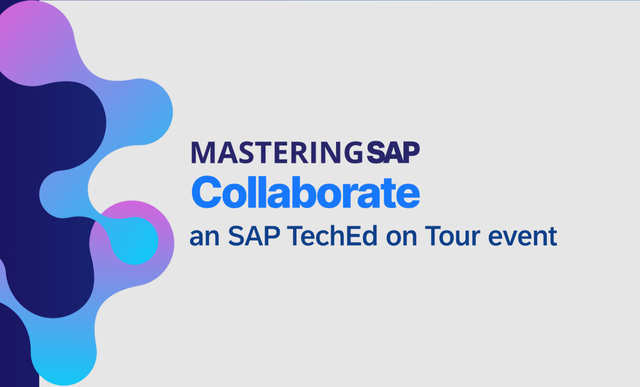How a Hybrid Model for Talent Management Has Led to Improved Business Processes and Results at a Large Canadian Bank
By AJ Whalen, Senior Research Analyst, SAPinsider
In a 2019 SAPinsider survey of SAP and SAP SuccessFactors customers, 39% of respondents classified their human capital management (HCM) solution landscape as a hybrid of both on-premise and cloud solutions. When asked to describe their projected HCM solution landscape one year from now, the trend toward hybrid landscape adoption accelerated, increasing from 39% to 52%. Hybrid HCM landscapes have grown in popularity as customers have selectively adopted cloud-based technology based on an immediate need or a compelling business case. In the case of a large banking organization that SAPinsider profiled recently, the journey to the cloud didn’t start with core HCM or payroll. It began with the implementation of SAP SuccessFactors Talent Management solutions that provide a direct impact on the performance of their key business processes like talent acquisition and retention.
The Talent Management Journey for a Customer in the Banking Industry
SAPinsider recently spoke with the Senior Manager, People & Technology Solutions at the Canadian-based bank about its SAP SuccessFactors journey. The bank is a Federal credit union located in British Columbia (BC), Canada with approximately 2,000 employees, two-thirds of whom are frontline banking staff in the retail and commercial banking sectors. The remaining third includes a segment for auto and equipment financing.
Explore related questions
As the largest credit union in its province by member size, the bank emphasizes a customer-centric approach to banking. To maintain this strategy, the business develops a lot of technology around their banking platform to improve customer experience. To ensure that its employees enjoy a similar quality of user experience, the bank’s People Division (its internal name for the Human Resources function) has implemented SAP SuccessFactors Performance & Goals, Recruiting, Onboarding, Learning, and Compensation solutions. The bank wasn’t ready to move its core HR and payroll to the cloud, so choosing a hybrid model that integrates SAP SuccessFactors Talent Management solutions with existing non-SAP core HR and payroll applications allowed it to realize business benefits from the cloud without implementing the full suite.
The banking sector faces robust training requirements to ensure employees are educated in both regulatory and industry-specific topics such as anti-money laundering and other criminal activity. For this particular bank, it is extremely important to deliver training to its employees in a solution that is user friendly and supports the reporting it needs to monitor and ensure compliance with training requirements.
To meet that goal, the bank implemented SAP SuccessFactors Learning in 2015. Prior to implementing Learning, the organization used a platform that lacked structure and integration, resulting in a loose collection of online courses that functioned as an independent learning platform.
Since the implementation, the bank has been able to expand the amount of learning and training that they can deliver, both self-directed and in-person, and they’re looking forward to exploring more advanced learning scenarios such as creating an entire curriculum for leadership development, creating assessments, and determining the right amount of time for shadowing.
Aligning Performance Goals with Business Goals to Keep Up With Growth
The bank has undergone an immense amount of change over the past five years as they’ve made the transition from a provincial to a Federal credit union with a national focus. With the growth in business and a wider scope, ensuring that employee performance aligns with the overall business plan is critical.
To achieve this alignment, the bank’s People Division implemented SAP SuccessFactors Performance Management in order to track key employee performance metrics and to ensure that its managers are promoting performance in a way that reflects business results.
A subgroup of the People Division, the shared services group, helps to manage performance forms and the annual performance cycle. The group functions as a jack-of-all-trades that fields HR-related questions from across the company. The bank also relies on the second tier of its shared services group, the advisor group, to handle most of their employee relations work and make sure that managers are properly equipped to coach employees.
One approach the bank has taken with its performance reviews is to design the process in a way that only gathers the information that is needed and allows the employee to provide feedback without bogging him or her down. To improve usability, portions of the performance form that aren’t relevant or necessary are hidden from the employee until he or she needs to see it. This simplifies the form and reduces the time employees spend completing it.
An important component of any performance process is goal setting. Because some of the bank’s branches have different goals and targets depending on the demographic of market they’re in, extracting data from SAP SuccessFactors and inserting it into the company’s analytics suite is essential for measuring individual performance against their business objectives.
What Does This Mean for SAPinsiders?
The bank has had success by choosing to implement a hybrid landscape of SAP SuccessFactors Talent Management solutions that add value to the company’s most important people functions alongside its existing core HR and payroll solutions. Based upon their experiences and the recent feedback from SAPinsider surveys, to ensure a successful implementation of SAP SuccessFactors Talent Management solutions across either hybrid or pure cloud landscapes, SAPinsiders should:
- Trust the design and functionality of the solutions. While business processes in SAP SuccessFactors solutions may not function the way you’re used to or the way you think they should, they are based upon best practices. Over the past few years, the bank has focused on keeping things out-of-the-box as much as possible and using configuration where necessary to improve processes. Customers should not focus on how things have always been done but instead focus their energy on how SAP SuccessFactors can improve and streamline their business processes.
- Take the time to thoughtfully develop requirements and determine business needs. Many customers put a majority of their focus on the technical aspects or configuration of the solutions. However, if you don’t first fully understand your own business requirements, even the most well-configured solution will be ineffective and possibly require re-work. Having clear requirements will also help you prioritize what needs to be done and when.
- Get the entire business and customers involved in your project. A successful implementation should focus on overall business objectives, not just on HR’s needs. If you focus solely on HR’s needs you risk missing key requirements and could potentially make change management efforts more difficult.
- Consider user experience when setting up new processes. In a recent SAPinsider survey, 58% of respondents said they expect a better user experience when implementing cloud HCM solutions. While there are inherent improvements in usability in these solutions as delivered, customers should consider the impact of their processes on usability. In this case, the bank carefully streamlined performance processes to limit options and screens based on what the end user actually needs. This has allowed them to save time and improve user experience.
Following this strategic guidance should help SAP customers get the most out their SAP SuccessFactors solutions and processes.








